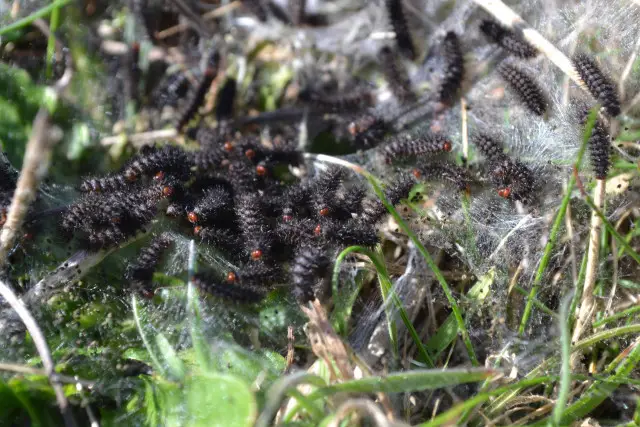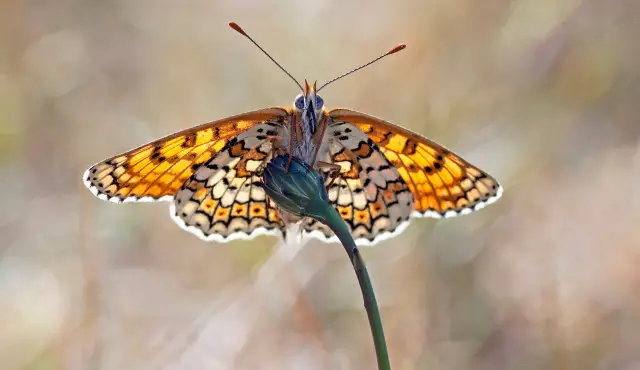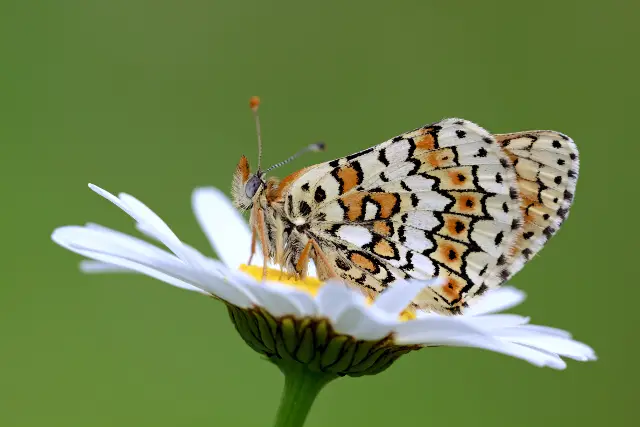Thanks to Katie for this news from Butterfly Conservation. Ed
Wildlife charity Butterfly Conservation (BC) is running a free workshop for anyone interested in monitoring the Glanville Fritillary.
This endangered butterfly is traditionally found along the south coast of the Isle of Wight and has experienced a severe decline in population over the last 30 years.
The training workshop will provide advice and information on how to identify the butterfly, its caterpillar and where best to find it, followed by an afternoon field trip.
Click on images to see larger versions

BC’s Conservation Officer for Threatened Species, Caroline Kelly, said:
“The Glanville Fritillary is the Isle of Wight’s flagship butterfly, but it has declined by over 50% since the 1980’s.
“It’s crucial we know where it is breeding on the island so we can work with the relevant landowners to provide advice and support on how best to maintain its habitat.
“The Isle of Wight Natural History and Archaeological Society and the National Trust have been surveying the Glanville Fritillary for more than 30 years and they’ve done an amazing job, but we are now very low on volunteers and desperately need new people to help us keep an eye on this special butterfly.”
What to look for
The upper wings of the Glanville Fritillary are a chequered pattern of black and orange-brown, with a row of black spots in orange circles along the bottom edge of the hindwing.
The underside is bright and distinctive, with two bands of orange marks, each outlined in black, on a cream and white background with more black spots towards the out edge of the wing. The caterpillars are black and spikey-looking with dark red heads.
Click on images to see larger versions

How the workshops can help
People attending the workshops will be taught how to look for this caterpillar and the webs they create, as this is the best way to measure the abundance and distribution of the butterfly.
The results of the surveys will help BC secure funding to carry out further conservation work.
Caroline said:
“Natural England has been extremely supportive of this and we really want to work with them on some trial habitat management work. This really is about everyone on the island pulling together to secure the future of this butterfly for years to come.”
The workshop takes place this Sunday (13 March) between 11am and 3pm at Seely Hall in Brook. More can be found on the Website.
Image: © Heath McDonald, Caroline Kelly, Matt Berry





